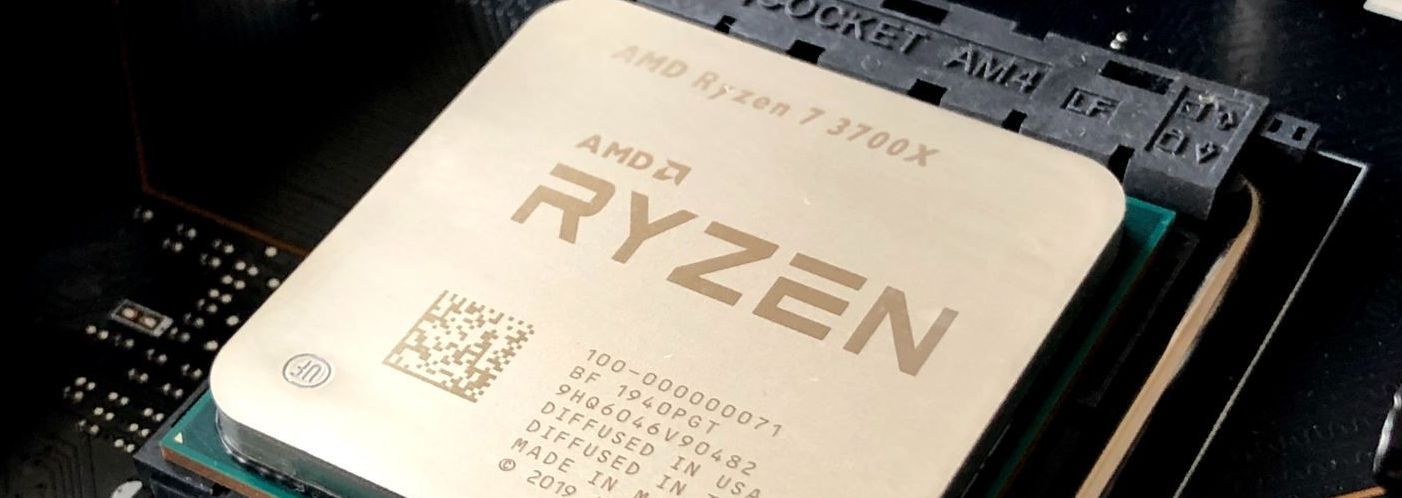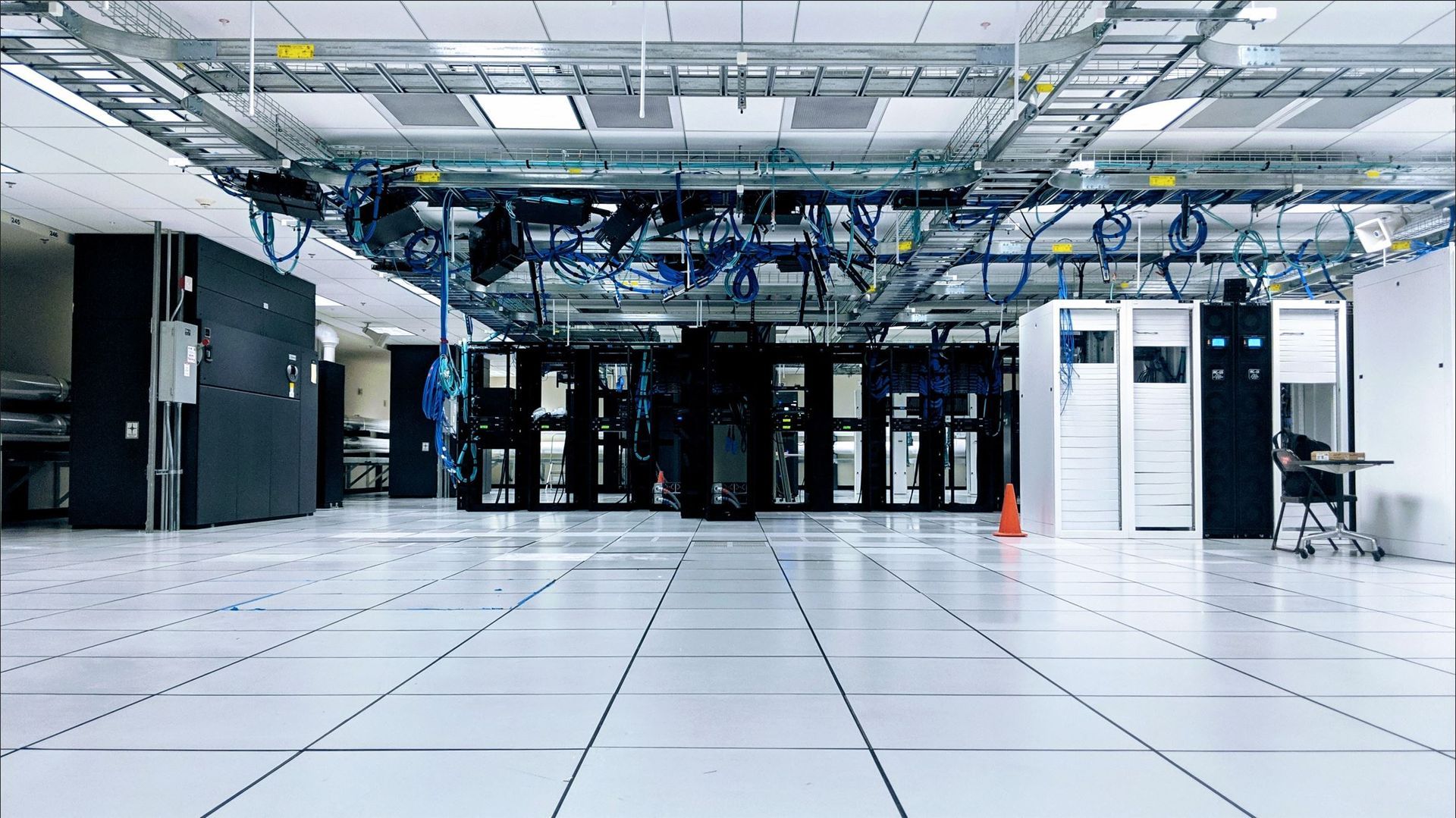How AMD Continues to Disrupt the Tech Industry
Learn How AMD Went From The Brink Of Bankruptcy To The Current CPU Market Leader

This post has been slightly adapted to a blog post from an APA paper written by the author. Download the APA paper here!
Executive Summary
This post provides an extensive exploration into the journey of Advanced Micro Devices (AMD) - from the brink of bankruptcy to becoming a global leader in the CPU market. The focal point of this paper is the transformational strategies of the company, the innovative technologies that propelled them forward, and the resultant disruptions across the computing industry.
AMD, once an underdog in the CPU industry, outshone the 40-year market leader, Intel, due to a significant strategic shift under the leadership of CEO, Dr. Lisa Su. Dr. Su's background in semiconductors, complemented by her tenure at IBM, played a critical role in navigating AMD toward a position of global leadership. This turnaround was primarily driven by a risky but ultimately rewarding transition from the underperforming Bulldozer architecture to the groundbreaking Zen architecture.
This revolutionary Zen architecture, coupled with the introduction of Infinity Fabric, led to improvements in processor performance, efficiency, and latency, facilitating the creation of CPUs with higher core counts. The increased average core count, from 4 to 15.6, for a new generation of consumer CPUs marked a significant shift in the industry's conventional wisdom. Consequently, it has pushed the market competition and AMD's worth beyond Intel in both the CPU and GPU markets.
Supporting this external disruption is AMD's robust internal IT infrastructure, promoting agility, scalability, and rapid iteration. It has served as the backbone for AMD's R&D efforts, powered collaboration, and communication, and ensured robust cybersecurity measures to safeguard intellectual property and proprietary technologies.
AMD's innovative offerings, especially its Epyc Genoa server processors, based on their Zen architecture, have dramatically disrupted industries beyond AMD's own, increasing computational power and reducing energy consumption. Their continual focus on cost-to-performance ratio, power efficiency, and AI computing solutions suggest AMD's commitment to drive further disruption in the industry.
Looking to the future, AMD's strategic plan reveals the firm's intent to challenge Nvidia's dominance in the graphics and AI sectors, leveraging key technologies developed for their CPUs. By continuing to innovate, adapt, and deliver superior customer value, AMD is poised to further revolutionize the computing landscape. The phenomenal turnaround story of AMD presents a valuable case study on how effective strategic disruption can transform a company's trajectory and reshape an industry.
Introduction: How AMD Continues to Disrupt the Tech Industry
In recent years, the pendulum has shifted from ‘The Blue Giant’ Intel, leading for the last 40 years, to their competitor Advanced Micro Devices (AMD), driving the market and pushing server, desktop, and System on a Chip (SoC) performance (Evangelho, 2018). Founded in 1969 in Santa Clara, California as a second-source chip manufacturer in the 8080 era of computing, they have been not only able to catch up but beat and lead the industry as now there are “AMD chips are in two Teslas models, NASA’s Mars Perseverance land rover, 5G cell towers and the world’s fastest supercomputer” (Encyclopædia Britannica, 2023; Tarasov, 2022). In this paper, we will take a look at the ways in which AMD has changed the face of computing by utilizing internal IT systems, as well as how their hardware breakthroughs have pushed the industry forward, enabling other firms to more easily create disruptions in their own industries driven by IT systems powered by AMD.
Early Days and Founding
AMD was founded in 1969 by Walter Jeremiah and seven of his colleagues from Fairchild Semiconductor Corporation (Encyclopædia Britannica, 2023). Their first product was a direct clone of the Intel 8080 named the AMD Am9080, produced without official licensing, which was reverse-engineered from an Intel chip. AMD continued to reverse engineer Intel’s chips for many decades, as some of their chips were even purchased by Intel when they had a shortage of chips. Eventually, Intel sued AMD, and “[t]here ensued a long legal battle that was finally decided in a 1994 U.S. Supreme Court ruling in AMD’s favour” (Encyclopædia Britannica, 2023). This ruling ensured that AMD would be allowed to continue producing the x86 chips that are still largely used today.
AMD started making history and showing just how much competition they could muster against Intel when they produced the first 1GHz chip with their release of the Athlon processor, which was designed specifically for personal computers that ran Microsoft Windows. Though AMD was starting to compete with Intel, they were not leading the industry and stayed as second in the marketplace for many years afterward. Following the success of their Athlon Processors, they used this capital in 2006 to purchase a “major fabless chip company ATI for $5.4 billion,” which would be poor timing, as the 2008 recession would hit shortly after (Tarasov, 2022). This marked a major change in the company as their core beliefs went from a strong belief in the self-fabrication of silicon to purchasing ATI, who relied on third parties for silicon fabrication and manufacturing, such as
Taiwan
Semiconductor
Manufacturing
Company (TSMC). Following the hard times of the 2008 recession, AMD decided to cut manufacturing costs by spinning off their production and manufacturing arm into its own company, GlobalFoundries. This change was a positive for AMD, as now they could greatly scale their production without worrying about the manufacturing aspects of product creation. This was not all a positive, as it ended up biting them later as their early 2010s bulldozer and piledriver architectures were seen by the market as far inferior products to its Intel counterparts. CPUs built on piledriver and bulldozer had latency, cache, and overheating issues. AMD tried to revert back to single-threaded processing cores but increased the physical core counts to make up for the lost threads, which failed miserably, as they greatly underperformed in the market and inside computers, and according to UserBenchmark, their flagship cost more, but performed roughly 43% worse than the Intel flagship (2023).
AMD as a Disruptive Firm
In the early 2010s, AMD found itself in a precarious situation, seeing itself on the brink of bankruptcy. Their processors were falling behind in the market against Intel, and their market share was rapidly declining. This presented a critical turning point for the firm, prompting the board to make the decision to appoint a new CEO in 2014 as a part of their strategic recalibration. Dr. Lisa Su was chosen for the position for this pivotal transition. Dr. Su was chosen due to her technical background in semiconductors, enhanced by her Ph.D. in engineering from MIT. They thought correctly that this change from a business-facing CEO to a technically oriented CEO would bring a fresh perspective and deep industry expertise to the firm. Her tenure at IBM, working alongside then-CEO Lou Gerstner, offered valuable insights into effective leadership and the importance of innovation in a rapidly evolving technology-driven landscape (Forbes Magazine, 2022).
One of Dr. Su's first and most transformative initiatives was to overhaul AMD's existing processor architecture. This marked the transition from the underperforming Bulldozer architecture to their Zen architecture, a move that was both daring and disruptive. The shift to Zen represented a substantial gamble for the company, one that was ultimately vindicated by the ensuing success. The Zen architecture was a paradigm shift that addressed many of the flaws inherent in the previous generations of AMD's processors. Key among these improvements was the introduction of Infinity Fabric, a high-speed, scalable interconnect technology that significantly enhanced core-to-core communication. This breakthrough allowed for more effective sharing of L2 and L3 cache, thereby increasing overall processor performance, efficiency, and latency.
The implementation of Infinity Fabric was the key that allowed AMD to overcome the limitations of conventional multi-core processor design. By fostering high-speed, low-latency data exchange between processor cores, AMD's Infinity Fabric empowered the creation of processors with higher core counts without compromising performance or efficiency. This was a direct change from the conventional wisdom that had dominated the industry and gave AMD a significant competitive advantage. Not only did AMD change, but this move has since forced Intel to switch course entirely from x86-based processors to ARM-based processors. Since the introduction of Zen, the average core count for a consumer CPU has increased from 4 to roughly 15.6 cores for a new generation of Intel/AMD processors (Ganti, 2022;
Westover, 2023). This has also translated into the enterprise sector, as server chips such as Epyc have increased AMD’s server market share from 0.8% before Zen in Q4 2017, to 17.6% as of Q4 2022 (Alcorn, 2022;
Mujtaba 2023). This amount of market share growth has pushed AMD to become a more valuable company than Intel, as they not only compete in the CPU market but also the GPU market, which powers graphics and new technologies such as Ai.
Internal Drivers of Disruption: AMD’s IT Systems
Without the internal IT systems in place to power their disruptions in the marketplace, they would not be nearly as successful or competitive. Underpinning AMD's disruptive external strategies is a robust internal IT infrastructure that has played an instrumental role in the firm's resurgence. The major parts of this internal infrastructure are an agile and robust organization, IT-driven innovation, IT systems that support collaboration and cross-team communication, and a focus on cybersecurity and data protection.
Agile and Robust IT Infrastructure
At the heart of AMD's disruptive capacity is an agile and robust IT infrastructure. This flexibility has been critical in supporting the company's innovation processes, including the continual development of the Zen architecture and their ever-evolving Infinity Fabric design. By adopting an IT infrastructure that promotes scalability, adaptability, and rapid iteration, AMD has been able to quickly respond to changing market demands and technological advancements. This agility has allowed AMD to maintain a culture of continuous improvement. By leveraging robust data analytics and machine learning capabilities within their IT systems, they have been able to glean insights, identify bottlenecks, and proactively optimize their processes and product designs. One of these features is the adaptation of their infinity fabric into an infinity ring that allows two-way communication between cores and cache, improving performance and reducing latency. The most recent innovative development has been the introduction of stacked L3 cache to greatly increase the amount of memory without increasing distance from the die called “3D V-Cache.” This innovation, initially introduced in the Ryzen 5800X3D processor, provided an almost generational improvement in compute power, as it still competes with their most recent Ryzen 7000 generation of processors.
IT-Driven Innovation
AMD's IT systems serve as the backbone for the company's Research and Development (R&D) efforts. With sophisticated computational modeling and simulation software, AMD engineers are able to explore new chip designs and architectures, run performance tests, and validate their work before any physical production begins. This IT-driven approach to innovation not only reduces costs and accelerates time-to-market but also encourages experimentation and risk-taking, which are key ingredients to producing disruptive innovation. Using technologies such as Electronic Design Automation (EDA), AMD has come up with one of the biggest shifts in compute since the introduction of Zen and ARM, which is Multi-Chip Modules (MCM) that shrink previously monolithic dies into smaller “compute modules” that communicate back and forth by utilizing the aforementioned infinity fabric. Shrinking the size of compute dies, greatly increases silicon wafer yield percentages, decreasing costs as more dies can be harvested and used than bigger dies that may suffer from a microscopic blemish rendering them completely unusable. While this technology increases complexity, by utilizing automated and sophisticated tools such as EDA, AMD was able to develop this technology in only a few short years.
IT Systems Supporting Collaboration and Communication
One of the notable attributes of AMD's internal IT systems is their role in enhancing collaboration and communication. Through the use of cutting-edge collaboration tools and platforms, AMD has cultivated a work environment that encourages information sharing and cross-team cooperation. This has proven especially useful in coordinating efforts between teams, such as engineering and marketing, leading to more cohesive product strategies and more efficient operations. Though there have been some miscommunications between departments, such as relaying incorrect information, for the most part, AMD has stayed as one of the most open and honest of the silicon manufacturers in terms of the performance of their products during marketing talks and demonstrations.
Cybersecurity and Data Protection
In a digital era where data breaches, cyber threats, and Intellectual Property (IP) leaks are almost commonplace, AMD's IT systems prioritize robust cybersecurity measures. They understand that a significant part of their disruptive capacity lies in their intellectual property and proprietary technologies. To protect these assets, AMD has invested heavily in advanced security protocols and technologies. This is in response to a 2022 hack and leak from RansomHouse, a hacking group that had successfully performed a credential-stuffing attack via AMD’s network (Scroxton, 2022). AMD was successful in mitigation, as they only had 450GB stolen of the potential hundreds of Terabytes that could have been stolen, as a similar hack of Nvidia by LAPSUS$ stole more than 1 TB of data, holding its IP hostage in exchange for certain actions from the company such as expanding the feature set of their software to support more of their hardware (Kan, 2022).
External Disruption: AMD’s Hardware Impact on Other Firms
The transformative power of AMD's hardware extends far beyond its internal operations. Through its innovative offerings, particularly the Epyc server processors based on the Zen architecture, AMD has introduced a new paradigm of efficiency and performance that has significantly disrupted industries and firms beyond its own. AMD's strategic focus on core density has had a profound impact on the computing capabilities of firms. With the introduction of their Epyc Genoa server processors, based on their 4th generation of Zen, AMD has effectively quadrupled the physical core count compared to the previously dominant Intel server chips. This leap from 24 to a staggering 96 cores has drastically increased computational capacity while maintaining the same power envelope (Shilov, 2022).
In addition to core density, AMD has also made significant progress in power efficiency. Epyc Genoa server processors manage to support 96 physical cores while consuming only 360 watts with octa-channel ECC RAM in a single socket. This advancement represents a remarkable feat of engineering that has significantly reduced the power-per-core ratio, which is one of the most important aspects in an enterprise setting. AMD's hardware has enabled firms to reduce their energy consumption and associated costs. This not only aligns with environmental sustainability goals but also has significant implications for the operational costs of running data centers and
High-Performance
Computing (HPC) facilities, as servers now require ¼ of the space for the same amount of cores and even less for the same amount of computational power due to clock and
Instructions
Per
Clock (IPC) improvements. This increase in density while maintaining the same power consumption is vital for firms that are looking to offer innovative solutions in their respective industries, especially related to
Internet
of
Things (IoT) offerings which often require high back-end computational power.
The Future of AMD: Continual Disruption
AMD's resurgence is not a one-off phenomenon but rather a committed firm’s ongoing journey of disruption. The company's near-term plans reflect a strategic focus on sustaining and advancing its competitive advantages, targeting key areas such as their cost-to-performance ratio, power efficiency, compute performance, and the increasingly important field of graphics processing and Artificial Intelligence (AI).
AMD has become known for its emphasis on delivering high performance at a competitive price, and the firm indicates that they would like to continue this going forward. The company is set to further enhance the cost-to-performance ratio of its offerings, aiming to deliver superior value for both individual consumers and enterprise-level customers. Parallel to this, AMD is committed to furthering its advances in power efficiency by utilizing smaller process nodes, such as TSMC’s upcoming 2nm and 3nm. Leveraging the expertise in innovative architectures and fabrication processes from both AMD and TSMC, AMD aims to create hardware that delivers superior computational power while consuming less energy. This dual focus on cost-to-performance and power efficiency is likely to continue disrupting traditional expectations in the industry, such as Nvidia’s CEO Jensen Huang claiming that “Moor’s Law is dead” (Tibken, 2019). This will drive competitors towards innovation themselves in order to compete with AMD.
One of the biggest challenges that AMD will face is surpassing Nvidia, specifically in regard to ai accelerators integrated into their GPUs. Historically, Nvidia has held a significant lead in these areas, but AMD is gearing up to disrupt this status quo, as they are claiming that in the next generation, utilizing MCM, AMD will be able to compete, if not surpass Nvidia, in raw Tflops and ai acceleration. In order to achieve this feat, AMD will need to leverage their existing technologies currently only found on their CPUs, such as infinity fabric, multi-chip modules, and 3D stacked V-Cache. The focus on ai-specific cards is particularly noteworthy, as there has been a rise in
ai-powered tools and applications. Demand for high-performance ai accelerating hardware is set to increase in both consumer and enterprise markets. By targeting this segment, AMD is positioning itself at the forefront of this emerging market, setting the stage for another wave of disruption.
Conclusion
The way in which AMD changed its trajectory from being on the brink of bankruptcy to the industry leader of the CPU market, is a testament to the transformative power of strategic disruption. AMD’s success and ability to challenge the industry’s norm of slight IPC increases from generation to generation set by Intel will be studied in the future. This extraordinary and complete turnaround is likely to become a pivotal case study for business and MBA students, providing valuable insights into the effective leveraging of core competencies and the harnessing of innovation to outpace competitors. AMD's strategy since Dr. Su took over as CEO in 2014 has been marked by consistent innovation, strong decision-making, and an unwavering commitment to delivering superior value to customers. Through being consistent, the result has been a revolution in the CPU space, where AMD has not only caught up with Intel but has surpassed them, asserting itself as the CPU market leader in multiple segments.
Looking ahead, AMD's strategic roadmap suggests a similar revolution in the graphics and AI sections of the industry. By utilizing the same strategies used for CPUs, and allowing the firm to focus on a single objective, sets AMD to challenge and eventually overtake Nvidia's current dominance. By leveraging key technologies already developed by AMD, such as their Infinity Fabric,
Multi-Chip
Module (MCM), and 3D V-Cache, AMD is positioning itself to disrupt another compute-based industry and expand its market leadership. However, this ambitious goal is not without its challenges, as it will require a steadfast commitment to the strategies that have served AMD well in the past. By continuing their emphasis on continual innovation, an agile approach to market shifts, and an unwavering focus on delivering superior value to customers AMD stands poised to further revolutionize the computing landscape.
Thank you for reading my blog post! If you found any of this information helpful or know someone who would find it useful, please share it with them. Let me know what you think in the comments below. Consider
joining my mailing list to keep learning as I continue to add value with more blog posts and articles about topics such as Information Technology Management and Marketing.
Once again:
This post has been slightly adapted from an APA paper to a blog post written by the author.
Download the APA paper here!









